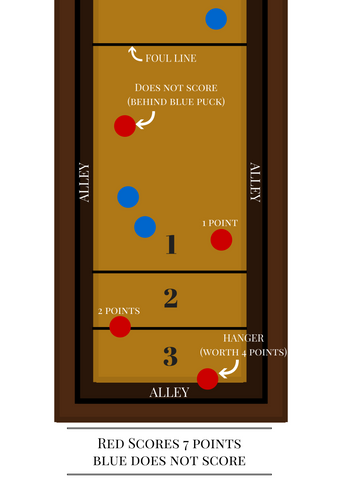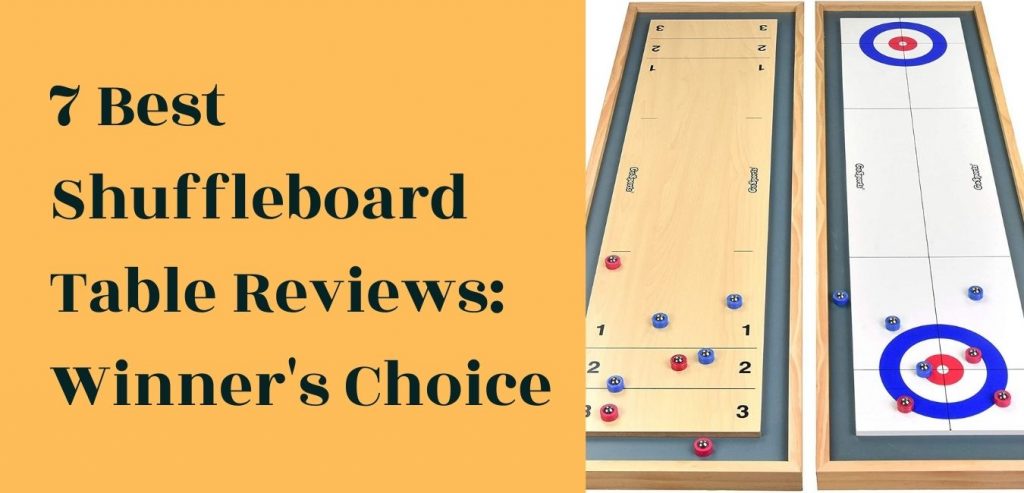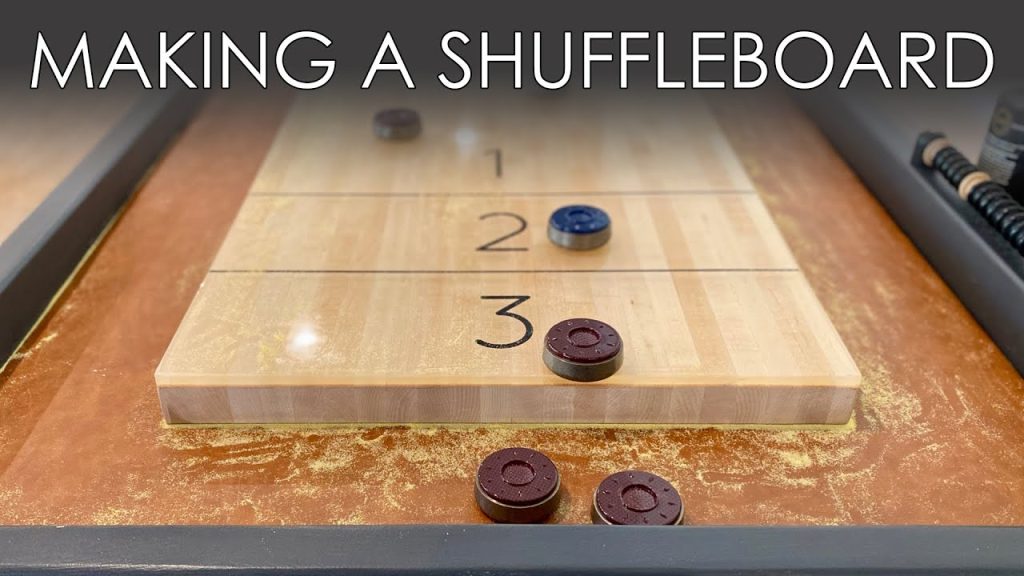To play shuffleboard, you need to know the basic rules. This classic game, often found in bars and on cruise ships, has simple yet engaging rules.
Shuffleboard is a game of skill and strategy. Players slide pucks down a long, smooth table aiming for specific scoring areas. Understanding the rules makes the game more enjoyable and competitive. Whether you are new to shuffleboard or looking to refine your skills, knowing the rules is essential.
This guide will take you through the basic rules, ensuring you have a clear understanding. Get ready to enjoy this fun and timeless game with friends and family. Let’s dive into the rules of shuffleboard!

Credit: www.shuffleboardfederation.com
Introduction To Shuffleboard
Shuffleboard is an exciting and strategic game enjoyed by all ages. It’s a game that combines skill, precision, and a bit of luck. Whether played indoors or outdoors, shuffleboard offers fun and challenge. In this section, we will explore its history and why it remains popular today.
Brief History
Shuffleboard has a rich history dating back hundreds of years. It is believed to have originated in England during the 15th century. Initially, it was a game for the aristocracy. Over time, it became popular among sailors who played it on ship decks. This led to the development of the modern version known as deck shuffleboard.
In the 20th century, shuffleboard gained popularity in the United States. It became a favorite pastime in retirement communities and on cruise ships. Today, shuffleboard is played worldwide, both as a recreational activity and competitive sport.
Popularity And Appeal
Shuffleboard’s popularity stems from its simple rules and engaging gameplay. Players of all skill levels can enjoy the game. It’s easy to learn but requires practice to master. This balance makes it appealing to both beginners and seasoned players.
The game is also versatile. It can be played on various surfaces, including courts, tables, and even floors. This adaptability adds to its widespread appeal. Additionally, shuffleboard can be played in different formats, such as singles or doubles, making it suitable for any social setting.
Another factor in its popularity is the social aspect. Shuffleboard encourages interaction and friendly competition. It’s a great way to bond with family and friends. Plus, it can be played indoors or outdoors, making it a perfect year-round activity.
Overall, shuffleboard is a timeless game that continues to attract players of all ages. Its blend of strategy, skill, and social interaction ensures it remains a beloved pastime.
Equipment Needed
Playing shuffleboard is fun and easy. But you need the right equipment to play. Understanding the equipment helps you enjoy the game better. Let’s explore what you need.
Shuffleboard Table
The shuffleboard table is the main piece of equipment. It comes in various sizes, usually between 9 to 22 feet long. The table surface is smooth and polished. This allows the pucks to glide easily. Look for a table with a level surface. This ensures fair play. Some tables have a climatic adjuster. This feature helps maintain the table’s smoothness.
Pucks
Pucks are also called weights. They are small, round, and heavy. Each puck weighs about 340 grams. You need eight pucks to play, four for each player. Pucks come in two colors, usually red and blue. This helps players distinguish their pucks from their opponent’s. Good quality pucks ensure better play. They slide smoothly on the table, making the game more enjoyable.
Scoring Accessories
Scoring accessories keep track of points. The most common accessory is the scoring unit. It can be manual or digital. Manual units require players to move markers. Digital units automatically update scores. Some tables have score zones marked on them. These zones help in quick scoring. You also need shuffleboard wax or powder. This ensures pucks slide easily and reach the scoring zones.
Basic Rules
Shuffleboard is a fun and engaging game. Its basic rules are simple and easy to learn. This guide will help you understand the essential rules to enjoy the game fully.
Objective Of The Game
The main goal in shuffleboard is to score points by sliding pucks into the scoring zones. Players aim to get their pucks closer to the scoring end than their opponent’s pucks.
Scoring System
Understanding the scoring system is key to playing shuffleboard. Each puck can score between 1 to 4 points depending on its position. Here’s how the scoring zones are typically divided:
| Zone | Points |
|---|---|
| Closest to the end | 4 points |
| Second closest | 3 points |
| Third closest | 2 points |
| Furthest from the end | 1 point |
To score, a puck must be completely within a scoring zone. Pucks touching the lines do not count. Players take turns sliding their pucks until all pucks have been played. At the end of a round, points are totaled.
Here’s a quick summary of the basic rules:
- Players or teams take turns sliding pucks.
- The goal is to land pucks in the scoring zones.
- Each zone has a specific point value.
- Only pucks fully within a zone score points.
- The player or team with the most points wins.
By following these rules, you can enjoy a fair and competitive game of shuffleboard.
Setting Up The Game
Begin by placing the shuffleboard table in a level spot. Ensure pucks and cues are nearby.
Setting up the game of shuffleboard is crucial for a smooth start. A well-prepared table and correctly placed pucks can make all the difference.Preparing The Table
First, ensure the shuffleboard table is clean and free of debris. Dust and dirt can affect how the pucks glide. Use a soft cloth to wipe down the surface. Next, sprinkle shuffleboard wax or powder across the table. This helps the pucks slide smoothly. Spread the powder evenly for consistent play.Placing The Pucks
Each player gets four pucks, usually colored red and blue. Stand at the end of the table. Place the pucks on the side closest to you. Ensure they are not touching each other. Line them up neatly. This setup ensures fair play and easy access during the game. By following these steps, you will be ready to enjoy a fun game of shuffleboard. “`Gameplay Mechanics
Learning the gameplay mechanics of shuffleboard is essential for beginners. Understanding these rules ensures a fair and enjoyable game. Let’s dive into the core aspects of shuffleboard mechanics.
How To Shoot
Place the puck at the edge of the shuffleboard. Hold the puck with a light grip. Use your dominant hand to push the puck. Aim for a smooth, straight shot. Do not jerk or flick your wrist. The puck should glide effortlessly. The goal is to land it in the scoring area.
Turn Order
Players take turns shooting their pucks. Each player shoots one puck per turn. The first player shoots their puck. The next player follows. Turns alternate until all pucks are shot. The player with the highest score wins the round. The game continues until a set number of rounds.
Strategies For Winning
Shuffleboard is more than just sliding pucks down a table. Winning requires smart strategies and careful planning. Below, we discuss two key strategies: offensive techniques and defensive moves. Using these, you can improve your game and outplay your opponents.
Offensive Techniques
Offensive strategies focus on scoring points and controlling the game. Here are some essential techniques:
- Target the 10-Point Zone: Aim to land your pucks in the highest scoring area. Precision is key.
- Use Angles: Slide your puck at an angle to avoid opponents’ pucks and block them.
- Double Stacks: Place one puck behind another. This makes it harder for opponents to knock both off.
Defensive Moves
Defense is just as important. Here are some moves to protect your lead:
- Clear Opponents’ Pucks: Knock your opponent’s pucks off the scoring zones.
- Block Strategically: Position your pucks to block your opponent’s path to high scores.
- Play Safe: Avoid risky shots that could lose your points. Focus on consistent scoring.
Using these offensive and defensive strategies can help you play better and win more games. Practice makes perfect, so keep honing your skills to become a top shuffleboard player.
Common Fouls
Understanding common fouls in shuffleboard is essential for fair play. Fouls can affect the game’s outcome and create disputes. Knowing the rules helps players avoid mistakes. Let’s explore the types of fouls and their consequences.
Types Of Fouls
Several actions in shuffleboard are considered fouls. One common foul is stepping into the playing area during another player’s turn. This disrupts the game and can lead to penalties. Another foul occurs when a player touches the puck while it is in motion. This action is not allowed and can lead to a reset of the play. Crossed lines during shooting are also fouls. Players must stay behind the designated shooting line to avoid penalties.
Consequences Of Fouls
Fouls in shuffleboard have specific consequences. If a player steps into the playing area, their puck may be removed from play. Touching a moving puck leads to an automatic point loss. Crossing the shooting line can result in the puck being disqualified. These penalties ensure fair play and maintain the game’s integrity. Players must be mindful of these rules to enjoy a smooth and competitive game.
Tips For Beginners
Playing shuffleboard is a fun way to spend time with friends and family. But for beginners, understanding the rules and techniques can be a bit daunting. Here are some essential tips to help you get started and improve your game quickly.
Practice Drills
Regular practice is key to becoming proficient at shuffleboard. Here are some effective drills:
- Basic Sliding: Start by simply sliding the puck to get a feel for the weight and speed.
- Target Practice: Set up targets at different distances and aim to slide the puck to those points.
- Consistent Release: Focus on releasing the puck consistently to maintain accuracy.
These drills help in getting comfortable with the puck and table. They build muscle memory and improve your overall game.
Improving Accuracy
Accuracy is crucial in shuffleboard. Follow these steps to enhance your precision:
- Stance: Keep your feet shoulder-width apart for balance.
- Grip: Hold the puck firmly but not too tight. A relaxed grip ensures a smooth slide.
- Focus: Keep your eyes on the target. Visualize the puck reaching the exact spot.
- Controlled Strength: Use just enough force to reach the target. Overpowering can lead to loss of control.
Practicing these steps will help you to aim more accurately and improve your game.
Advanced Techniques
Shuffleboard is a game of skill and strategy. Once you master the basics, you can elevate your game with advanced techniques. These techniques add flair and precision to your play. Here, we will cover two key advanced techniques: Spin Shots and Bank Shots.
Spin Shots
Spin shots involve adding a twist to the puck. This technique can change the puck’s path. It helps in bypassing obstacles and opponents’ pucks.
To execute a spin shot:
- Hold the puck with a firm grip.
- Apply a slight wrist twist while releasing.
- Practice the motion to get the right amount of spin.
Spin shots require practice. The key is to control the puck’s speed and direction. A well-executed spin shot can be a game-changer.
Bank Shots
Bank shots use the sides of the shuffleboard table. This technique helps to reach tough spots. It can also help in scoring points indirectly.
To perform a bank shot:
- Identify the angle of the shot.
- Strike the puck towards the side wall.
- Calculate the rebound angle to hit the target area.
Bank shots are all about geometry. Understanding angles and rebounds is crucial. With practice, you can master bank shots and outplay your opponents.
| Technique | Key Actions | Benefits |
|---|---|---|
| Spin Shots | Wrist twist on release | Change puck’s path |
| Bank Shots | Use side walls | Reach tough spots |
Both spin shots and bank shots require skill. Practice these techniques to improve your shuffleboard game. Happy playing!
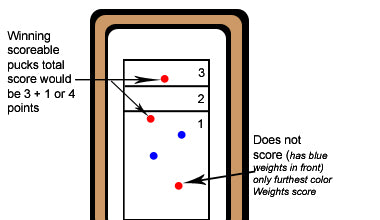
Credit: mccluretables.com
Shuffleboard Etiquette
Shuffleboard is a fun and engaging game. But like any sport, it has its own set of etiquette rules. Following these rules ensures everyone has a pleasant experience. Let’s delve into some key aspects of shuffleboard etiquette.
Sportsmanship
Good sportsmanship is crucial in shuffleboard. Always be polite to your opponents. Shake hands before and after the game. Encourage and compliment good shots. Avoid boasting or taunting. Smile and enjoy the game.
Respecting Equipment
Shuffleboard equipment is delicate. Handle the pucks and cues with care. Do not slam or throw the pucks. Place the cues gently on the board. Keep the board clean and free of debris. Respect the equipment, and it will last longer. This ensures a better game for everyone.
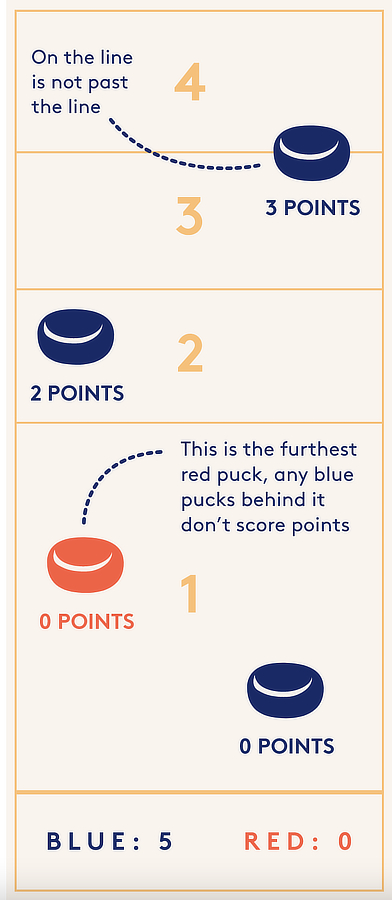
Credit: www.libertygames.co.uk
Frequently Asked Questions
What Are The Basic Rules Of Shuffleboard?
Shuffleboard rules involve sliding pucks down a table or court to score points. Players aim to land pucks in scoring zones while avoiding penalties.
How Do You Score In Shuffleboard?
In shuffleboard, points are scored by landing pucks in specific zones. Points vary depending on the zone where the puck lands.
What Equipment Is Needed For Shuffleboard?
To play shuffleboard, you’ll need a shuffleboard table or court, pucks, and shuffleboard cues. Some versions may require scoring devices.
How Many Players Can Play Shuffleboard?
Shuffleboard can be played with 2 or 4 players. In doubles, each team has two players, one at each end of the table or court.
Conclusion
Shuffleboard is a fun and engaging game for all ages. Follow the basic rules to get started. Practice regularly to improve your skills. Remember, the key is precision and strategy. Enjoy playing with friends and family. Shuffleboard provides great entertainment and friendly competition.
Now, gather your equipment and start playing. It’s time to experience the joy of shuffleboard.

